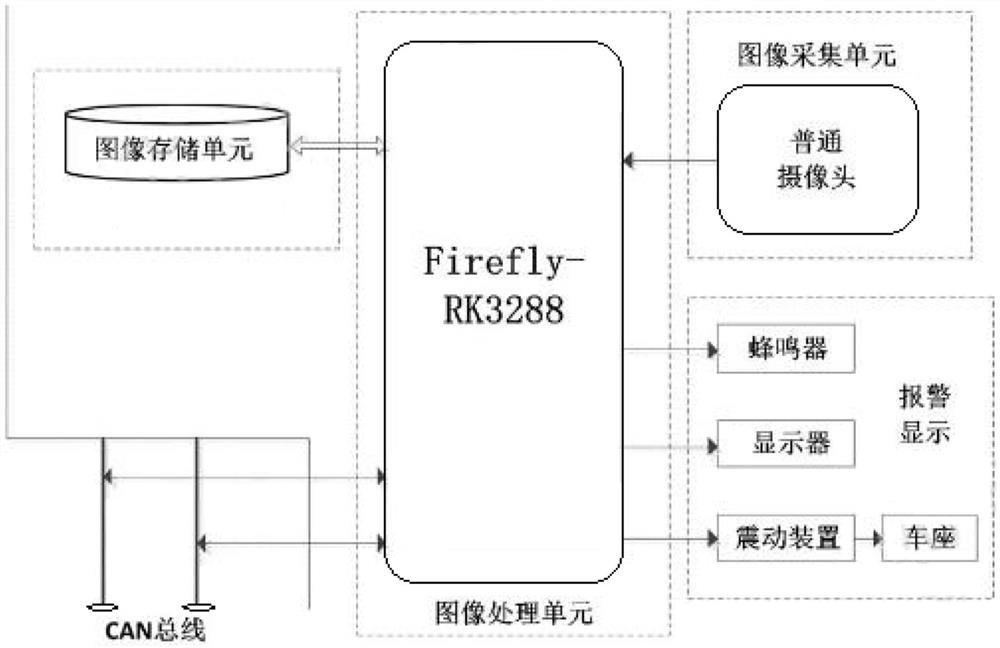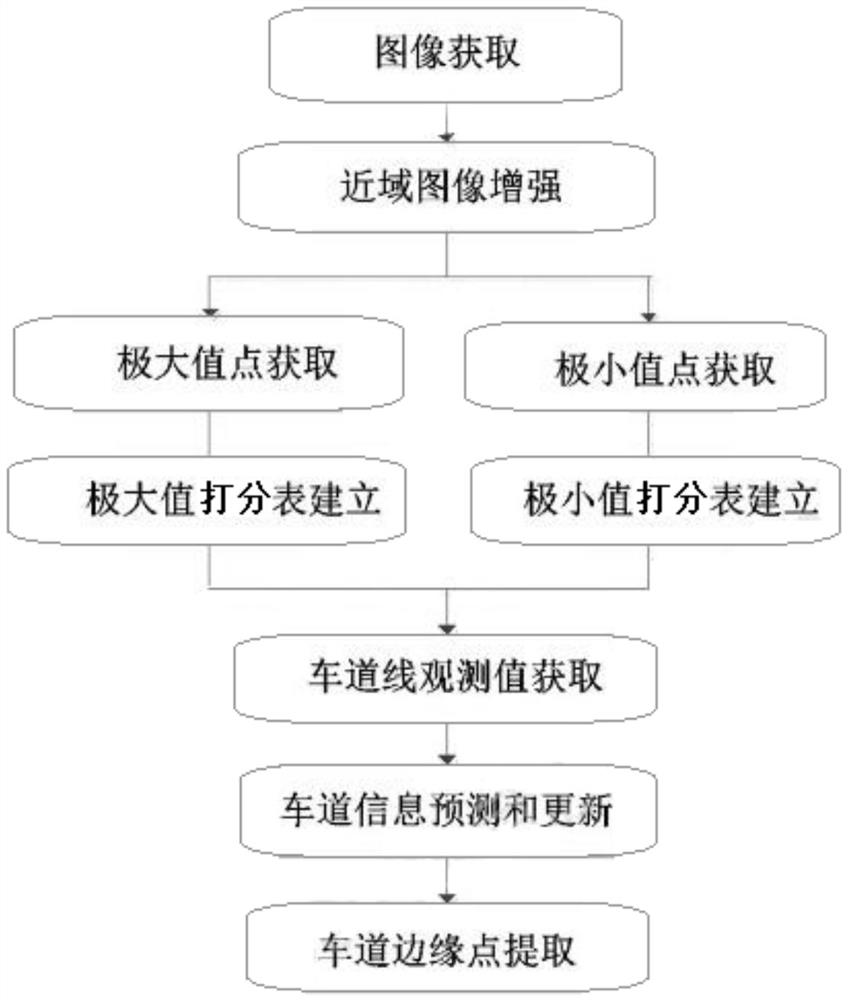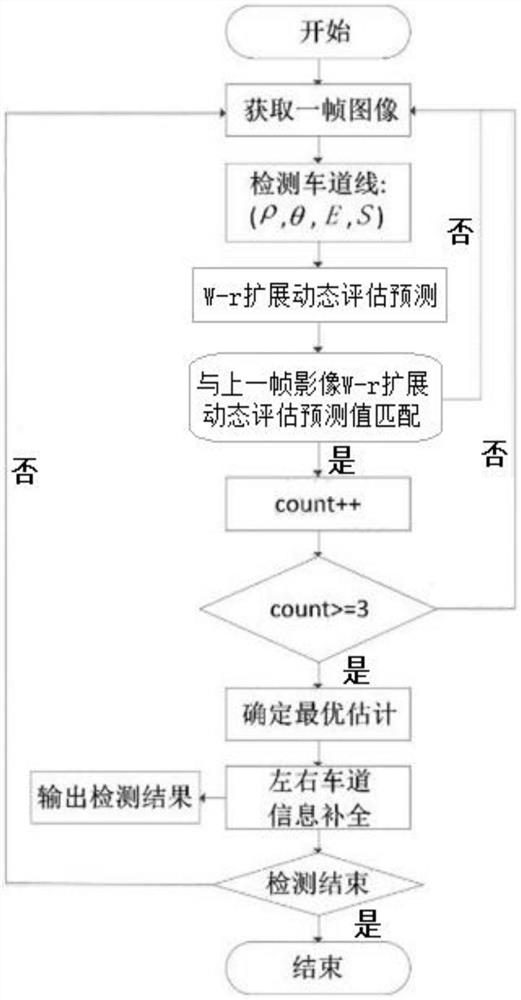[0008] First, through the classification and analysis of the existing
lane detection algorithms, it is concluded that there are some or other deficiencies when they are directly applied to the vehicle
lane departure warning system; although the
lane detection algorithm based on the basic features of the image has low calculation , but its robustness is poor, and many complex road conditions cannot be detected or
false detection occurs; although the lane line detection based on geometric information is better, it involves calculation modules such as
perspective transformation, which requires a large amount of calculation, and Many parameters need to be adjusted, which is difficult to realize in real time; the lane line detection model based on color information is better for simple road conditions, and the speed is fast, but it is difficult to use under various complex road conditions; the lane line detection model based on
deep learning Line detection is a relatively new field. Although
deep learning has demonstrated powerful capabilities in the fields of
big data processing and face recognition, its platform requirements are high, and there are still many problems in its real-time performance and effect in lane line detection. The existing technology lacks a real-time warning
algorithm and
system for lane deviation with
fast speed, good effect, practicability and applicability;
[0009] Second, the prior art lane departure warning hardware platform is not economical and practical, and the hardware cost is high, and the stability and real-time performance of the vehicle-mounted
system are poor, and there are often obvious lags and even failures, which cannot be effectively reduced. Traffic accidents occur, reducing casualties; at the same time, the cost of updating and using is high, low cost, narrow scope of application, large system size, inconvenient installation, weak
power consumption and poor economy when used on motor vehicles. Although there are various detection algorithms, the amount of calculation is relatively large, and the detection speed is too slow to be used in the vehicle system. Real-time lane line detection and early warning cannot be realized on the vehicle equipment. Therefore, the development of a lane departure warning technology based on the ARM platform has Great significance and great practical value;
[0010] Third, the prior art lacks a fast lane line
recognition algorithm that can meet real-time requirements, lacks a fast lane feature optimization modeling method, and cannot detect complex
road condition lane information stably and quickly in combination with road features. The
perspective transformation calculation module used by the algorithm has a large
time complexity, which not only has little effect, but also greatly increases the amount of calculation when used in the vehicle system, slows down the detection speed, and cannot combine the edge point intensity and the parallel relationship
feature selection of the lane edge. For lane lines with high reliability, it is impossible to estimate the parameters of angle, offset, edge average intensity, and custom curvature, and it is impossible to use lane color information to distinguish yellow and white lane lines. There is no method to distinguish virtual and real lane lines by edge point spacing; There are technical methods that can only detect the straight line of the lane and cannot reflect the characteristics of the curvature of the lane. It requires the conversion of each coordinate system. In
engineering applications, it is necessary to obtain the internal and external parameters of the camera, the installation location, and the vehicle model. The extraction degree of the lane edge is too low , it is difficult to realize real-time detection of lane lines on the ARM platform with weak computing power;
[0011] Fourth, after accurately determining the position information of the lane line, it is necessary to obtain the relative position information of the motor vehicle, and calculate the various possibilities that the driving motor vehicle will deviate from the lane through the deviation strategy; the existing technology is based on the lane model and real
road surface coordinate information. The adaptability of the early warning method is weak. To establish the geometric imaging coordinate system of the motor vehicle system, camera, and
road surface, it is necessary to know the model size of the motor vehicle, the type of road, the rotation angle and height of the camera and optical lens, the internal parameters and
distortion parameters of the camera , every time a car, road model or camera is changed, the coordinate system must be re-established, which is very troublesome in
engineering; at the same time, the camera needs to be calibrated after perspective transformation and other
processing involving image pixel coordinate conversion, which is very large To a certain extent, the trouble of
actual use is increased, and the calculation speed and operation simplicity are poor; the establishment of the road model to realize the deviation early warning is contrary to the original intention of the
algorithm design, and the lateral speed of the motor vehicle in the lane is not considered, and the two early warning strategies are integrated. The method lacks the use of the convenient relative distance between the motor vehicle and the lane for early warning judgment when the lateral speed is not large; lacks the deviation rate of the left and right lane lines in the image for lane departure when the lateral speed is large Judgment, lane departure warning cannot achieve the desired effect
 Login to View More
Login to View More  Login to View More
Login to View More 


